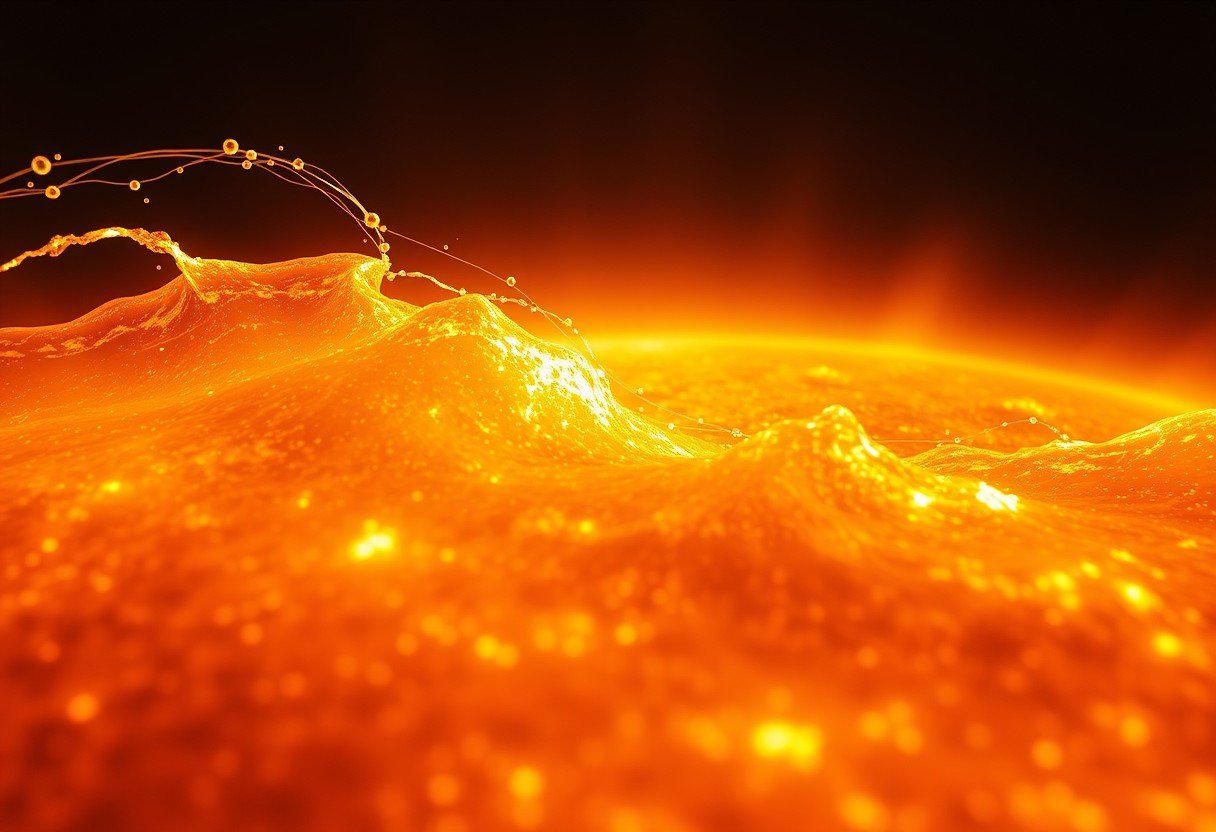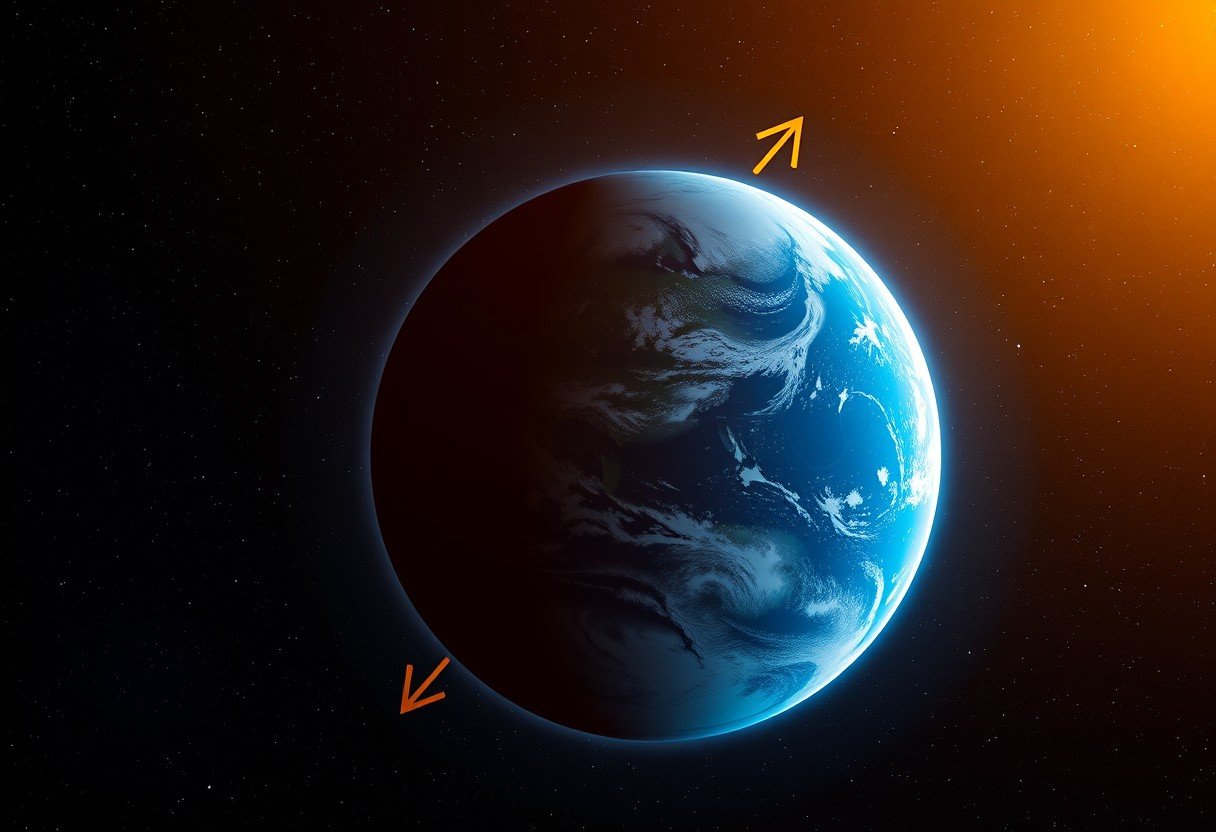The Sun has a special layer where energy moves as waves, transferring from one atom to another in a slow, zigzagging journey. This area is called the radiative zone, a super dense and hot region located between the Sun’s core and its outer layers. Understanding this complex process reveals how the Sun generates the energy that powers our entire solar system and sustains life on Earth.
The Sun’s Layered Structure: A Quick Overview
While it looks like a simple ball of fire from Earth, the Sun is made of several distinct layers. Each layer has a specific job in creating and moving the Sun’s immense energy.
The main internal layers are the core, the radiative zone, and the convective zone. The core is where nuclear fusion happens, creating all the energy. From there, the energy must travel through the other layers to reach the surface and shine out into space.
Outside these inner layers are the Sun’s atmosphere, which includes the photosphere (the visible surface), the chromosphere, and the corona. Every layer works together in a dynamic system that produces everything from sunlight to powerful solar flares.
What is the Radiative Zone?
The radiative zone is the middle layer of the Sun’s interior, sandwiched right between the super-hot core and the churning convective zone. It is an incredibly dense region filled with a state of matter called plasma.
Temperatures in this zone are extreme, ranging from about 7 million degrees Celsius near the core to 2 million degrees Celsius at its outer edge. The immense pressure from the Sun’s gravity packs the plasma so tightly that particles are very close together.
This density is the key reason why energy transfer here is so unique and slow. Unlike in other layers, the matter in the radiative zone doesn’t move around much. Instead, energy has to find another way to pass through.
How Energy Travels Through the Radiative Zone
Energy moves through the radiative zone in a process called radiative transfer. It all starts with photons, which are tiny particles of light and energy created by nuclear fusion in the core.
These photons attempt to travel outwards towards the surface. However, the plasma in the radiative zone is so dense that a photon can’t go very far before it bumps into an atom. When this happens, the atom absorbs the photon.
The atom then re-emits the photon, but in a completely random direction. It might go forward, backward, or sideways. This process of absorption and re-emission happens over and over again, billions of times.
This method of energy transfer is often called a “random walk” because the photon’s path is completely unpredictable. It’s a very slow and inefficient way to move energy, but it’s the primary method in this dense part of the Sun.
The Slow Journey of a Photon
Because of the constant absorption and re-emission, the journey of a single photon from the core through the radiative zone can take an astonishingly long time. Scientists estimate this journey can last anywhere from a few thousand to over a million years.
Think about it: the light that reaches us today was actually created in the Sun’s core thousands of years before human civilization began. This long duration highlights just how dense and opaque the Sun’s interior really is.
This slow, meandering path ensures a steady and stable release of energy from the Sun’s surface. If the energy escaped too quickly, the Sun would be much more volatile and unstable.
Radiative Zone vs. Convective Zone: Key Differences
Once energy finally makes its way through the radiative zone, it reaches the convective zone, where the transfer method changes completely. The main difference lies in how matter behaves in these two layers.
In the radiative zone, matter is stable, and energy moves through radiation. In the convective zone, matter is in constant motion, like a pot of boiling water. Hot plasma rises, releases its energy at the surface, cools, and then sinks back down.
Here are the key distinctions:
- Energy Carrier: In the radiative zone, photons carry the energy. In the convective zone, large blobs of hot plasma carry the energy.
- Speed of Transfer: The radiative process is extremely slow (thousands of years), while the convective process is much faster.
- Mechanism: The radiative zone uses absorption and re-emission of light waves. The convective zone uses the physical movement of hot gas.
This table provides a simple comparison of how energy moves in the Sun’s main regions.
| Sun Region | Primary Energy Movement Type |
|---|---|
| Core | Nuclear Fusion (Energy Creation) |
| Radiative Zone | Radiative Transfer (Photon Waves) |
| Convective Zone | Convective Currents (Plasma Movement) |
Why Understanding Energy Transfer in the Sun Matters
Studying how energy moves within the Sun is not just an academic exercise. It has real-world implications for us on Earth. This knowledge helps scientists build better models of our star’s behavior.
By understanding the dynamics of the radiative and convective zones, we can better predict solar activity like sunspots and solar flares. These events can impact our planet’s magnetic field, disrupt satellite communications, and even affect power grids.
Furthermore, learning about our own Sun helps us understand the life cycles of other stars throughout the universe, giving us deeper insights into how galaxies and planetary systems form and evolve.
Frequently Asked Questions
What is the region of the Sun where energy moves as waves from atom to atom?
The region where energy moves as waves from atom to atom is the radiative zone. It is located between the Sun’s core and the convective zone, and energy here travels via photons that are repeatedly absorbed and re-emitted by plasma particles.
How does the energy transfer work in the radiative zone?
Energy transfer in the radiative zone happens through a process called radiative diffusion. Photons from the core are absorbed by atoms, which then re-emit them in random directions. This “random walk” continues for thousands of years until the energy reaches the next layer.
Why does it take so long for energy from the core to reach the surface?
It takes so long because the radiative zone is incredibly dense and opaque. A photon can only travel a very short distance before colliding with a particle, causing it to change direction. This constant scattering significantly slows down the outward journey of energy.
What happens to the energy after it leaves the radiative zone?
After leaving the radiative zone, energy enters the convective zone. Here, the transfer method changes to convection, where hot plasma rises to the surface, releases energy as light and heat, cools, and then sinks. This process is much faster than radiative transfer.
How does understanding the Sun’s energy movement help in space science?
This knowledge is crucial for predicting space weather, including solar flares and coronal mass ejections that can affect Earth. It also helps scientists understand stellar evolution and the fundamental processes that govern how all stars generate and distribute energy.









Leave a Comment